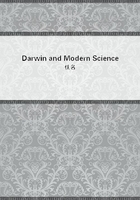
第299章
States or governments are organised schemes of action amongst groups of men, and they belong to various types to which generic names, such as autocracy, aristocracy or democracy, are somewhat loosely applied. Adefinite type of government corresponds to one of our types of motion, and while retaining its type it undergoes a slow change as the civilisation and character of the people change, and as the relationship of the nation to other nations changes. In the language used before, the government belongs to a family, and as time advances we proceed through the successive members of the family. A government possesses a certain degree of stability--hardly measurable in numbers however--to resist disintegrating influences such as may arise from wars, famines, and internal dissensions. This stability gradually rises to a maximum and gradually declines. The degree of stability at any epoch will depend on the fitness of some leading feature of the government to suit the slowly altering circumstances, and that feature corresponds to the characteristic denoted by a in the physical problem. A time at length arrives when the stability vanishes, and the slightest shock will overturn the government. At this stage we have reached the crisis of a point of bifurcation, and there will then be some circumstance, apparently quite insignificant and almost unnoticed, which is such as to prevent the occurrence of anarchy. This circumstance or condition is what we typified as b. Insignificant although it may seem, it has started the government on a new career of stability by imparting to it a new type. It grows in importance, the form of government becomes obviously different, and its stability increases. Then in its turn this newly acquired stability declines, and we pass on to a new crisis or revolution. There is thus a series of "points of bifurcation" in history at which the continuity of political history is maintained by means of changes in the type of government. These ideas seem, to me at least, to give a true account of the history of states, and I contend that it is no mere fanciful analogy but a true homology, when in both realms of thought--the physical and the political--we perceive the existence of forms of bifurcation and of exchanges of stability.
Further than this, I would ask whether the same train of ideas does not also apply to the evolution of animals? A species is well adapted to its environment when the individual can withstand the shocks of famine or the attacks and competition of other animals; it then possesses a high degree of stability. Most of the casual variations of individuals are indifferent, for they do not tell much either for or against success in life; they are small oscillations which leave the type unchanged. As circumstances change, the stability of the species may gradually dwindle through the insufficiency of some definite quality, on which in earlier times no such insistent demands were made. The individual animals will then tend to fail in the struggle for life, the numbers will dwindle and extinction may ensue. But it may be that some new variation, at first of insignificant importance, may just serve to turn the scale. A new type may be formed in which the variation in question is preserved and augmented;its stability may increase and in time a new species may be produced.
At the risk of condemnation as a wanderer beyond my province into the region of biological evolution, I would say that this view accords with what I understand to be the views of some naturalists, who recognise the existence of critical periods in biological history at which extinction occurs or which form the starting-point for the formation of new species.
Ought we not then to expect that long periods will elapse during which a type of animal will remain almost constant, followed by other periods, enormously long no doubt as measured in the life of man, of acute struggle for existence when the type will change more rapidly? This at least is the view suggested by the theory of stability in the physical universe. (Imake no claim to extensive reading on this subject, but refer the reader for example to a paper by Professor A.A.W. Hubrecht on "De Vries's theory of Mutations", "Popular Science Monthly", July 1904, especially to page 213.)And now I propose to apply these ideas of stability to the theory of stellar evolution, and finally to illustrate them by certain recent observations of a very remarkable character.
Stars and planets are formed of materials which yield to the enormous forces called into play by gravity and rotation. This is obviously true if they are gaseous or fluid, and even solid matter becomes plastic under sufficiently great stresses. Nothing approaching a complete study of the equilibrium of a heterogeneous star has yet been found possible, and we are driven to consider only bodies of simpler construction. I shall begin therefore by explaining what is known about the shapes which may be assumed by a mass of incompressible liquid of uniform density under the influences of gravity and of rotation. Such a liquid mass may be regarded as an ideal star, which resembles a real star in the fact that it is formed of gravitating and rotating matter, and because its shape results from the forces to which it is subject. It is unlike a star in that it possesses the attributes of incompressibility and of uniform density. The difference between the real and the ideal is doubtless great, yet the similarity is great enough to allow us to extend many of the conclusions as to ideal liquid stars to the conditions which must hold good in reality. Thus with the object of obtaining some insight into actuality, it is justifiable to discuss an avowedly ideal problem at some length.